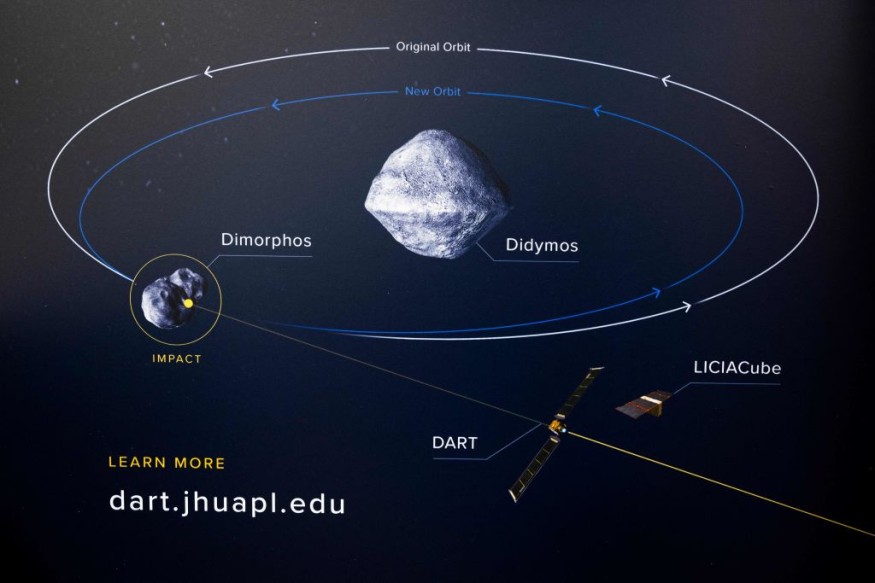NASA's Double Asteroid Redirection Test (DART) is on a mission to find out if it is possible to stop an asteroid on a collision course with Earth, like the one that caused the mass extinction of dinosaurs.
Daily Star reports that the asteroid-deflecting mission plans to deliberately crash into a 530-foot-wide non-harmful asteroid called Dimorphos at nearly 15,000 miles per hour on Monday, September 26. DART is a mission created to show that a spacecraft can deflect an object that threatens to collide with Earth.

What You Need to Know About DART
DART is a small spacecraft on a one-way mission to send an asteroid off-course through a kinetic impact, the first-ever space mission to demonstrate asteroid deflection through this method. It was launched on November 23, 2021, at 10:21 PST aboard a Falcon 9 rocket out of Vandenberg Space Force Base in California.
The spacecraft is set to impact Dimorphos on September 26, 2022, at 7:14 pm EDT. The asteroid is part of the binary asteroid system Didymos, which is the ideal candidate because of its proximity to Earth and does not pose a threat to the planet because it is not a path to collide with Earth.
Didymos is the larger asteroid, which measures 0.48 miles (780 meters) in diameter, while the smaller one is the Dimorphos measuring 525 feet (160 meters)- in diameter and orbits Didymos.
The timing of the DART impact was chosen because it is when the distance between Earth and Didymos is minimized, so high-quality telescopic observations are possible. The asteroid will still be roughly 7 million miles (11 million kilometers) from Earth when it happens, but telescopes can observe the impact and contribute to the global international observing campaign to determine its effect.
The change in the orbit of Dimorphos by DART's kinetic impact is designed to affect its orbit closer to Didymos slightly. The mission demonstrates the capability to respond to a possible asteroid threat.
Asteroid Simulator Shows What Would Happen Without DART
Professor Gretchen Benedix of the Space Science and Technology Center told Newsweek that an object roughly 100 meters in diameter could create a crater about 1 kilometer across Earth. It could be bad when it hits a densely populated area, although that is devastating for the region or the planet. Scientists estimate that it could hit Earth every 10,000 years.
Scientists estimated that an object around 10 kilometers in diameter could create a crater as big as the Chicxulub crater, which is associated with the asteroid that caused the extinction of dinosaurs and occurs every 100 million years.
A high-tech simulator from Imperial College London and Purdue University researchers shows how devastating a potential asteroid impact will be if the DART mission fails. The first version is a simple text interface where they could type certain parameters of the asteroid, such as its size and speed, then the simulator will provide commentary on what might happen.
They have developed a newer version that allows users to plot potential effects into a mapping tool like Google Earth. Professor Gareth Collins, at Imperial College London and the co-creator of the tool, said that one version is good if people want to know what will happen to a particular location during the impact, while the other is good for showing how extensive the damage will be.
The simulator can calculate five main environmental possible effects of an asteroid impact. The first is the thermal radiation that will create a fireball, the second is a blast wave produced in the atmosphere, the third is a crater produced by throwing material, the fourth is an earthquake, and the last is a tsunami if the impact happens in water.
RELATED ARTICLE : NASA James Webb, Hubble Space Telescopes To Attempt Monitoring DART as It Slams Into Dimorphos
Check out more news and information on Space in Science Times.
© 2025 ScienceTimes.com All rights reserved. Do not reproduce without permission. The window to the world of Science Times.











